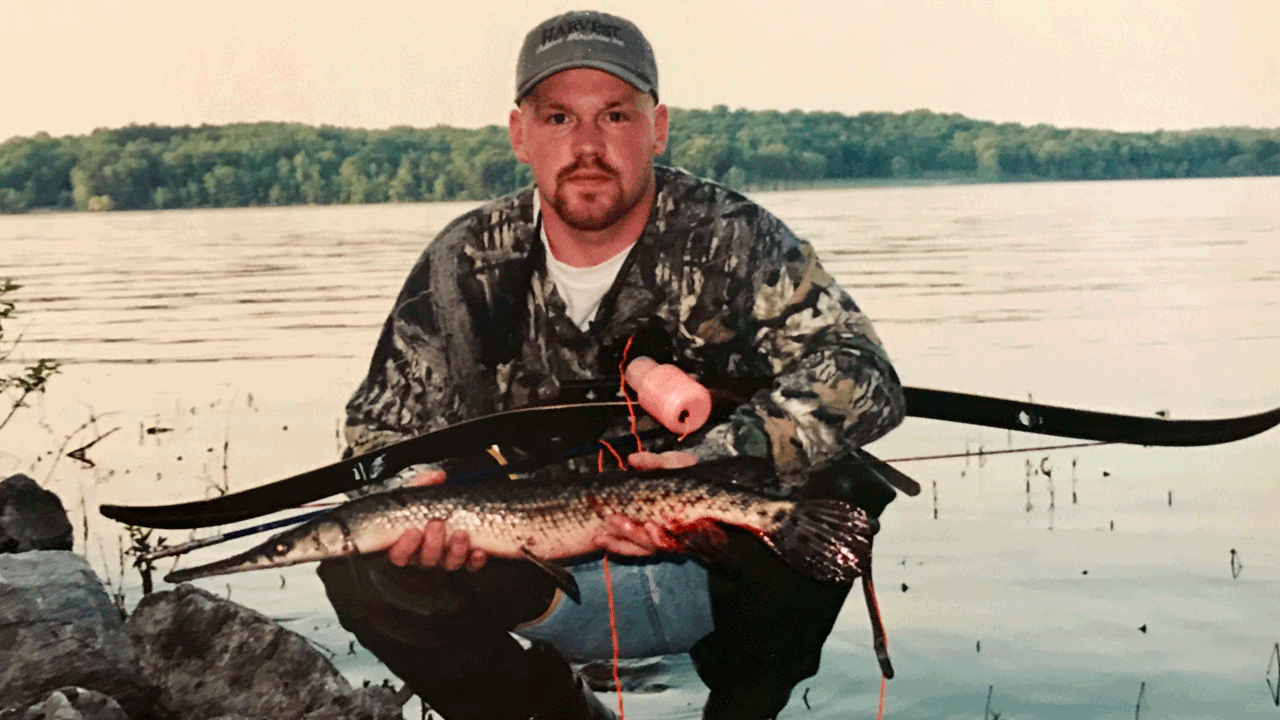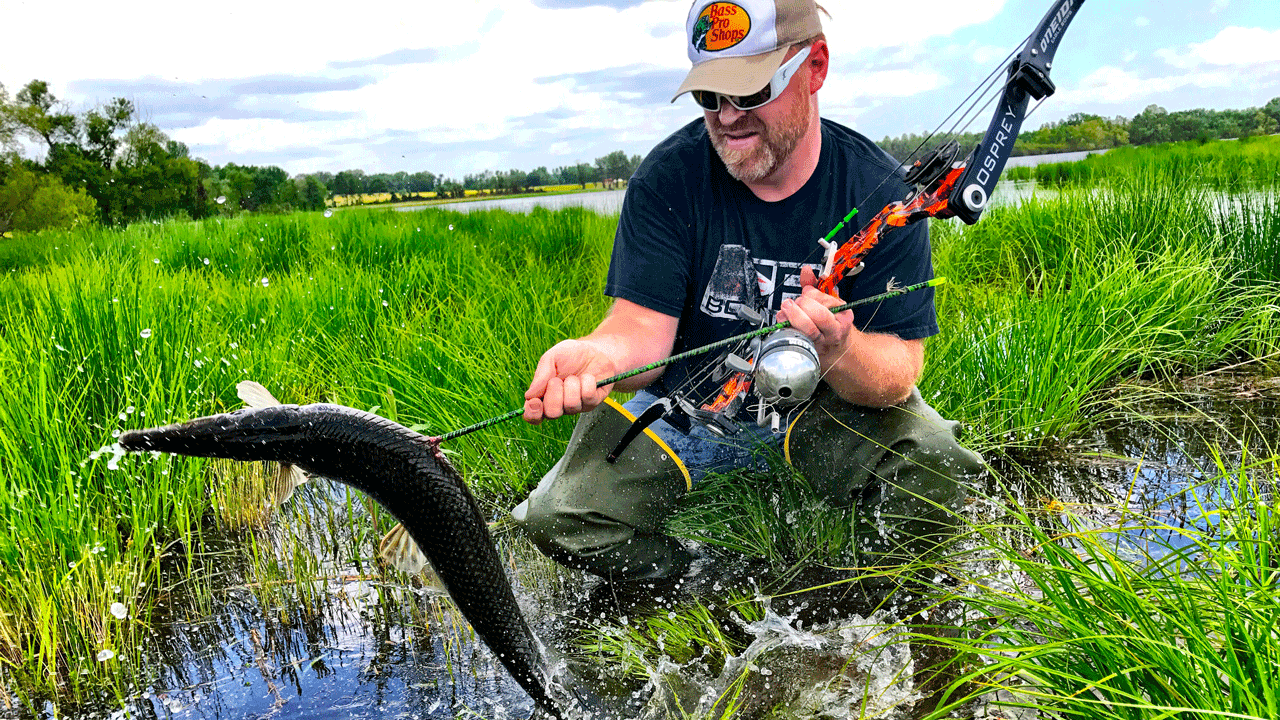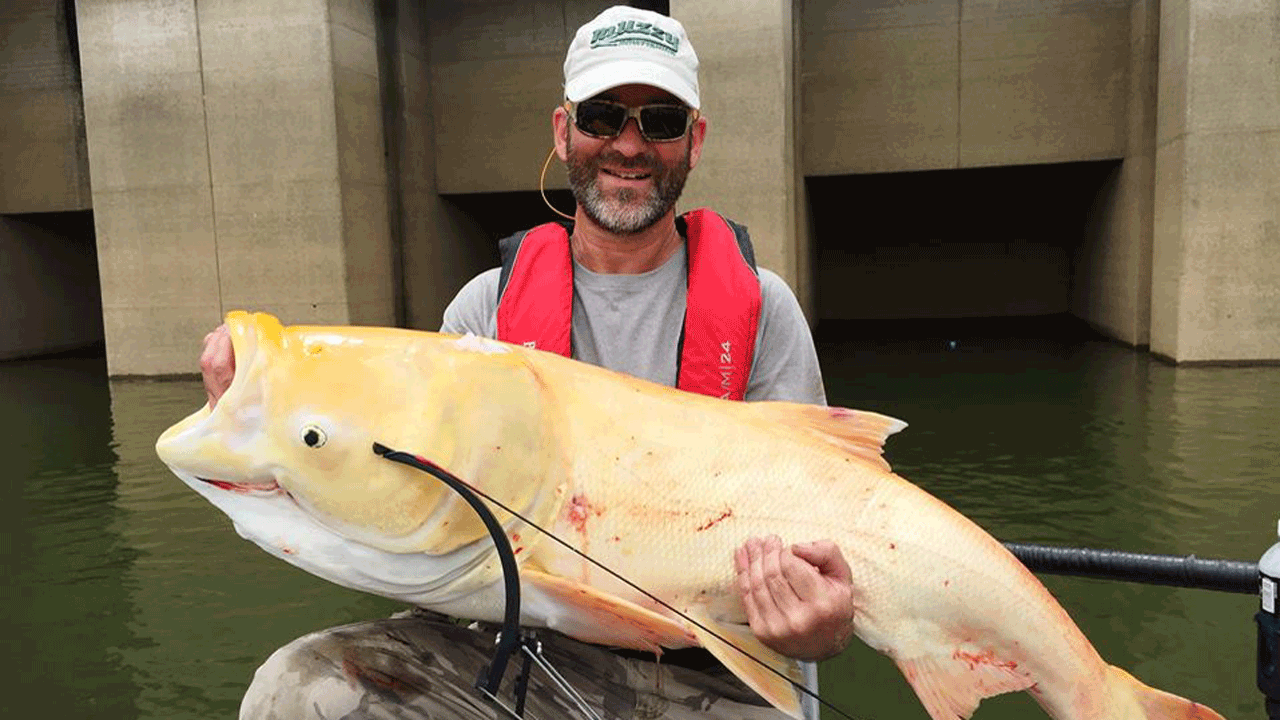When I first started bowfishing, I used a recurve bow. Not necessarily by choice, but rather due to the fact that it was the bow that I got my hands on the quickest. I honestly don’t remember where I picked up that old recurve bow, but I’m thinking it was a garage sale special that cost me very little. The bow served me well for a number of years until I eventually sought out other options. But even now, many years later, I continue to see the benefits of a fast shooting recurve bow for bowfishing. It begs the question, when it comes to compound vs. recurve, which is best for bowfishing?
Knowing that Mark Land of Muzzy Bowfishing has done his fair share of bowfishing with both weapons, I gave him a shout to pick his brain on his thoughts on both setups. Here’s a look at what Mark had to say.
Pros and Cons of Using a Recurve Bow for Bowfishing
Pros: “Recurve bows are fast, light and generally less expensive than a other compound,” says, Land. “They also require minimal maintenance, are incredibly simple and easy to setup. They’re really great for fast shooting.”
Cons: “Recurves are longer than conventional bows, so you’ll tend to run into some clearance issues with brush and railings,” says Land. “More draw weight is required for similar energy you would find with a compound. There’s also less mounting options for accessories when using a recurve. And many shooters will fall into the habit of snap shooting rather aiming at fish when using a recurve.”

I used a recurve bow in the early days as I waded around in the shallows of KY Lake.
Pros and Cons of Using a Compound Bow
Pros: “Compound bows are generally more powerful, requiring less draw weight,” says Land. “Compounds allows you to adjust the bow to your specific needs when it comes to draw weight and draw length. You’ll also find seemingly endless mounting options when it comes to using a compound bow. and they seem to easier to learn to shoot than a recurve, as well as being easier to shoot altogether.”
Cons: What’s the downside of shooting a compound bow? “Compounds are typically more expensive, although lower cost options are still available,” says Land. “Shooters will also find compound bows to be heavier and more cumbersome than a recurve bow, and break downs often require a bow press. Compound bows are more size-specific for the shooter rather than being a one-size-fits-all bow. Finger pinch can also be an issue for some shooters when shooting the shorter compound bows, and compounds rarely allow for the fast handling you’ll find with a recurve.”

I’m still wading the shallows of KY Lake, and still shooting gar, but the gear has definitely changed these days.
Where the Recurve Shines
As previously mentioned, the recurve wins big when it comes to fast handling and the need for a snap-shooting option at fast fish. They are also the perfect option for shooting flying fish, like Silvers, from the back of the boat. “I love the recurve when I’m floating down a river in the kayak and need something light and portable with me just in case,” says Land. “They are a great option when the action gets fast and they don’t require perfect form or shot execution.”
Fish Pounding with a Compound
Compound bows, lever-bows included, get most of the playtime these days among the bowfishing community. They shoot harder, producing more punch in deeper water and on bigger fish. “I pretty much prefer my Oneida for most everything these days,” says Land. “They are faster, smoother shooting, more precise and easier to tune. They promote better shooting on my part, no doubt.”
The beauty of a lever bow, like the Oneida Osprey, is that it gives the shooter the best of both worlds. It’s somewhat of compound-recurve hybrid. It pounds fish like a compound yet draws super smooth like a recurve. Even better, you can pretty much fix any problem on the fly, without the need for a bow press like a lot of compound bows.
Why is that such a big deal?
Bowfishing bows will take more abuse than any other archery hunt or adventure on earth. These bows take a beating in the boat, get dunked in the lake on a regular basis, and take routine body-slams by big fish. Derailed bows are a pretty common occurence. So having a bow that can be put back together again, without the use of a bow press is golden when it comes to bowfishing.

Mark Land depends on his Oneida Osprey bows these days for shooting monster fish.
The great thing about bowfishing is that you can jump in at any level with the gear options available. Sure, bows have evolved, and bowfishing-specific bows are now the norm in archery shops and sporting good stores everywhere. But you can still get started with an old recurve or vintage compound bow from days gone by. Both have their place – and both will get you on the water bowfishing.

 By
By 



